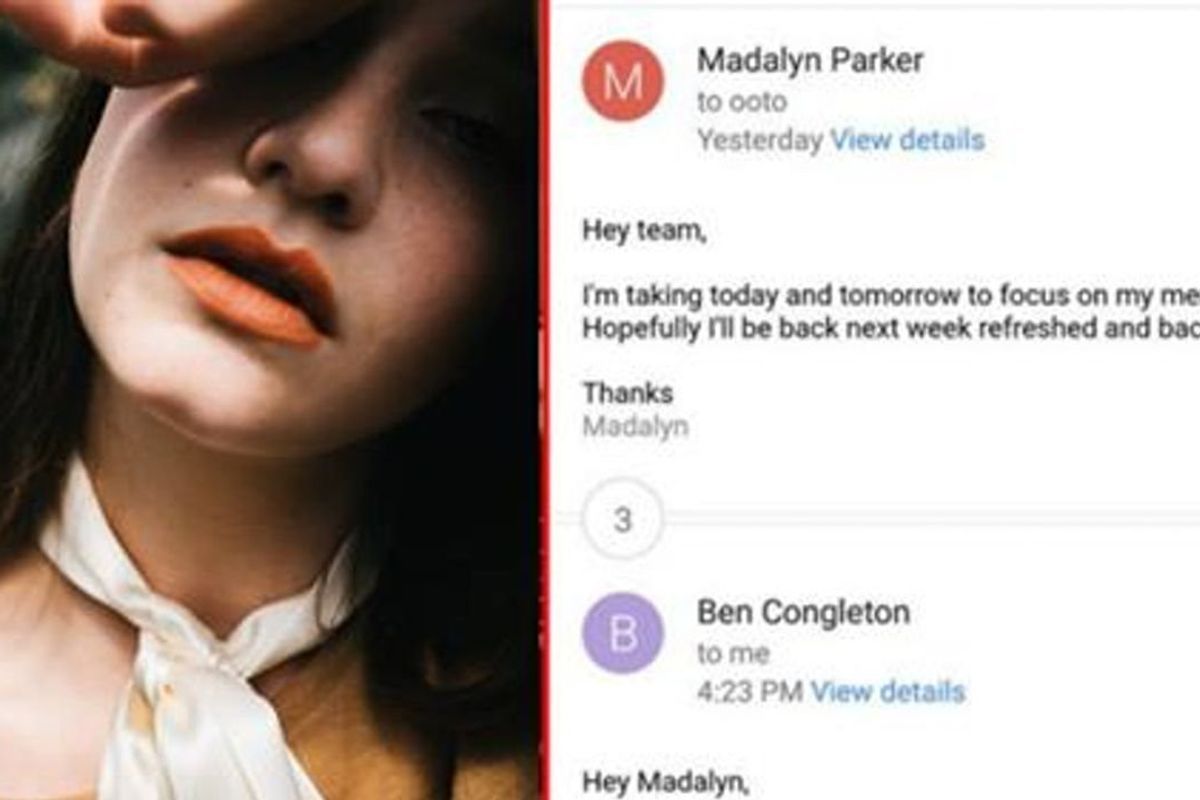A few common phrases found in job descriptions may sometimes be illegal.
And there are 4 things you can do to help fix the problem.
The story of how David Perry went from medieval history professor to disability rights journalist is not what you'd call typical.
Nine years ago, Perry's son was born with Down syndrome. At the time, he didn't know a whole lot about disability rights, but he wanted to learn. He took his training and skills as a researcher to better understand Down syndrome and other forms of disability. It was a more recent event, however, that set Perry on his current path.
About three years ago, Perry heard the story of Ethan Saylor, a man with Down syndrome who was shot and killed by police officers. In reaction to that tragedy, Perry took the knowledge he'd gained over the previous few years and used it to write about the discrimination and violence people in the disabled community face every day.
"It's become my life's work," he says.
Perry's children dance in the family's kitchen. Photo by David Perry, used with permission.
Have you ever seen something along the lines of "Must be able to lift 25 pounds" on a job ad? Those types of job requirements are the subject of Perry's latest article.
Sometimes, those requirements make perfect sense. For example, on a listing for a job stocking shelves with items that weigh up to 25 pounds, it'd be reasonable to ask job applicants to be able to complete that task. But what about an office desk job? Or maybe a position as a teacher? Or, well, anything that's not by definition "manual labor"?
Perry's latest article tackles what happened when the kind of group you'd expect to be aware of this issue, a disability rights organization called the Arc of Texas published a job listing that included the type of language that would exclude large numbers of disabled people from applying for, or securing, the job.
"The problem comes when these kinds of rules get made essential," Perry tells Upworthy. "If the main point of the job is to be good at working on a computer, as so many jobs now are, then that's what's essential, not being able to restock the coffee in the break room."
Disability Pride Parade in New York in 2015. Photo by Stephanie Keith/Getty Images.
Isn't that already illegal? Yes. But without enforcement, it doesn't mean much.
On July 26, 1990, President George H.W. Bush signed the Americans with Disabilities Act into law. The law — which offers up a host of employment and other protections on the basis of disability — is great. It's a powerful tool. However, it often goes unenforced. The federal government isn't exactly combing through every job listing thrown up on Craigslist, nor does it have the resources to do so.
The goal, Perry says, then, is to find new ways for the government to incentivize employers to hire disabled workers, pointing to 2014's Workplace Innovation and Opportunity Act as an example of positive action being taken by the government on the incentive front.
President Obama speaks during a reception to commemorate the 25th anniversary of the Americans with Disabilities Act in 2015. Photo by Alex Wong/Getty Images.
Just 19.2% of people with disabilities participate in the labor force, and physical requirements are extra obstacles.
People without disabilities, on the other hand, participate in the workforce at a rate of 68.1%. Even for those with disabilities who are actively employed or looking for work, their unemployment rate is more than twice that of the rest of the population.
Job descriptions and requirements like this are just one of many problems keeping people with disabilities out of the workforce, but they're also one of the most easily solved.
Andrew Pike, a veteran of the U.S. Army who was paralyzed in 2007 in Iraq, attends training with his new service dog Yazmin. Photo by Justin Sullivan/Getty Images.
The truth is, many organizations simply may not be aware they're practicing discrimination by including those physical requirements in job descriptions.
Luckily, solving this problem in those cases may be as simple as having a frank discussion with those in charge or those in HR.
There are four things any person can do to get these kinds of conversations started:
1. Ask your company's human resources department if they have any boilerplate anti-disability clauses on job descriptions and applications. If so, try to explain how this may promote discrimination and discourage disabled applicants.
2. Start a conversation with your school, business, or organization about what you as students, employees, or volunteers can do to create an accepting workplace for people with disabilities.
3. Share articles and information with friends and co-workers on social media. Perry's How Did We Get Into This Mess? is a great resource, as is this piece by Olga Khazan at The Atlantic, as well as the resources page at RespectAbility.
4. And, finally, if you personally encounter a job ad that discriminates against you, you can always contact the Equal Employment Opportunity Commission (EEOC). Obviously, you hope it doesn't have to come to this option, but it's good to know its out there.
Perry's 9-year-old son was born with Down syndrome. Photo by David Perry, used with permission.
In the case of Arc of Texas, all it took was a note from Perry for them to replace their physical and mental work requirements.
The disability rights organization adjusted their job postings to be more inclusionary and issued an apology. As writers like Perry and others continue to raise awareness about the struggles disabled people endure on a daily basis, we can all learn and push to make the world a better, more accepting, and more accessible place for all.



 Tony Trapani received the most important letter of his life, but he didn't see it for 50 years Photo by
Tony Trapani received the most important letter of his life, but he didn't see it for 50 years Photo by  Tony and Samuel didn't waste time thinking about what might have been if he'd seen the letter earlier. Photo by
Tony and Samuel didn't waste time thinking about what might have been if he'd seen the letter earlier. Photo by 
 A teacher in front of her class.Photo by
A teacher in front of her class.Photo by  Students taking a test.via
Students taking a test.via  Students around a computer.via
Students around a computer.via 

 Dean Hoffmann's mugshot.
Dean Hoffmann's mugshot.  Nonverbal cues are often the only safe way a victim can communicate.
Nonverbal cues are often the only safe way a victim can communicate.
 Parker, on the edge of burnout, knew she needed to step away. Photo by
Parker, on the edge of burnout, knew she needed to step away. Photo by  The office is not always the best environment for mental health. Photo by
The office is not always the best environment for mental health. Photo by